Heading out the door? Read this article on the new Outside+ app available now on iOS devices for members! >","name":"in-content-cta","type":"link"}}'>Download the app.
The term “hip openers” is used a lot in yoga, but no one ever talks about what that actually means. What exactly are we looking to open? Is it the hip bone, the hip socket, the hip joint, or all of the above? Or maybe it’s Pandora’s box.
What most people associate with the term “hip openers” is actually one specific type of movement—external rotation of the hip joint. This is the movement that takes place at your hip joints when you turn your feet and legs out in a Charlie Chaplin-esque stance, such as when you practice Utkata Konasana (Goddess Pose), Virabhadrasana II (Warrior 2 Pose), Baddha Konasana (Bound Angle Pose), and Sukhasana (Easy Pose).
It can feel like your hips are literally opening in poses that engage your body in external rotation. But that’s only one aspect of hip openers.
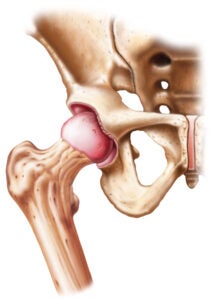
The hip joint is a ball-and-socket joint, which means it can move in six different directions. This includes not only external rotation but also internal rotation, adduction and abduction, and flexion and extension. If we truly want to “open” our hips by stretching the muscles and connective tissues that surround the hip, then we need to focus on all of these hip movements rather than obsessing about just one.
The 6 different types of hip openers in yoga
Following are various ways you can move your hips and examples of yoga poses that incorporate these movements. It’s important to note that these different movements often happen at the same time in a pose. For example, in Janu Sirsasana (Head-to-Knee Pose), the hip of your bent leg is simultaneously in external rotation, abduction, and flexion.
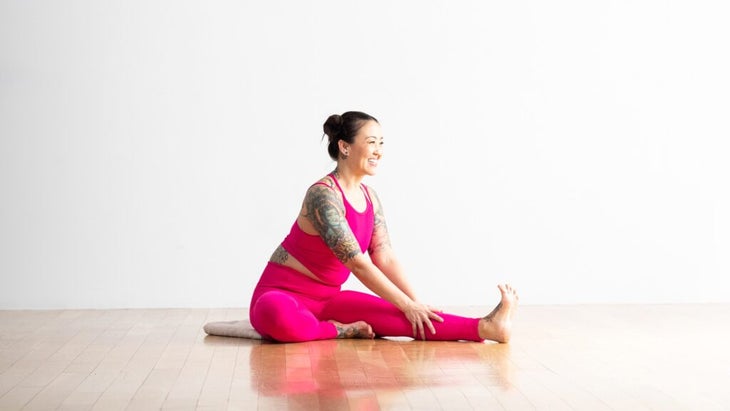
1. External rotation
External rotation means turning your thigh outward away from your body. This happens in standing poses when your feet are turned away from one another and in seated poses when one or both thighs are brought out to the side.
Janu Sirsasana (Head-to-Knee Pose)—the hip of your bent leg is in external rotation
Eka Pada Rajakapotasana (One-Legged King Pigeon Pose)—your front hip is in external rotation
Utkata Konasana (Goddess Pose)—both hips are in external rotation

2. Internal rotation
The opposite of external rotation, internal rotation means turning your thigh inward toward your body. This happens in standing and seated poses that ask you to cross your legs and in balancing poses that ask you to draw your lifted leg toward your midline.
Garudasana (Eagle Pose)—both hips are in internal rotation
Virasana (Hero Pose)—both hips are in internal rotation
Virabhadrasana III (Warrior 3)—the hip of your back leg is in internal rotation
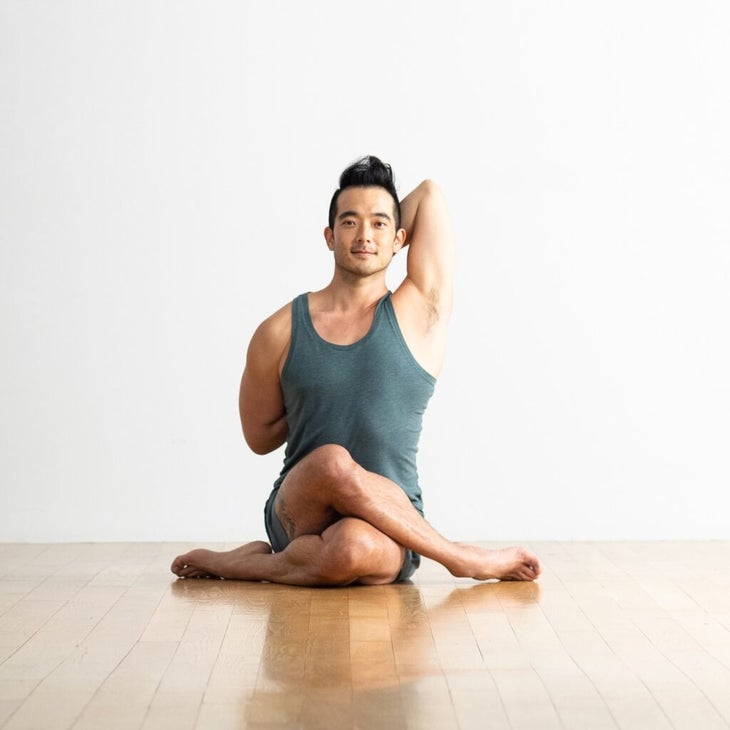
3. Adduction
Adduction refers to hip openers that draw your thigh toward the midline of your body. This can look like hugging your thighs together or crossing your legs.
Gomukhasana (Cow Face Pose)—both hips are in adduction
Navasana (Boat Pose)—both hips are in adduction
Garudasana (Eagle Pose)—both hips are in adduction
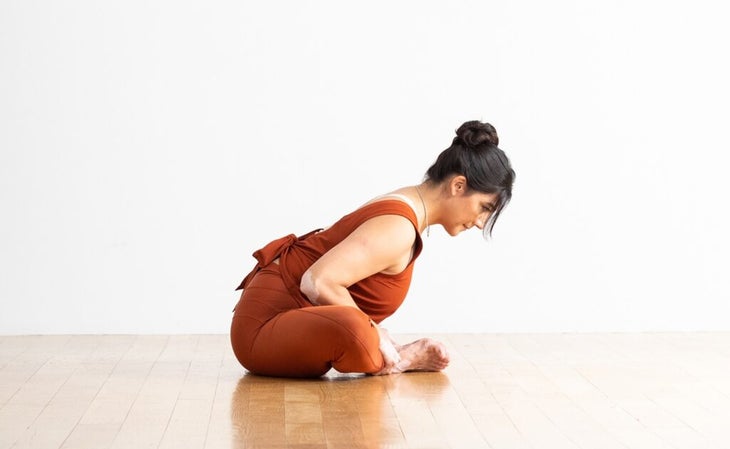
4. Abduction
The opposite action as adduction, abduction means moving your thigh away from the midline of your body. Think of stepping your feet wide apart or positioning your knees away from one another.
Baddha Konasana (Bound Angle Pose)—both hips are in abduction
Upavistha Konasana (Wide-Angled Seated Forward Bend)—both hips are in abduction
Malasana (Garland Pose)—both hips are in abduction
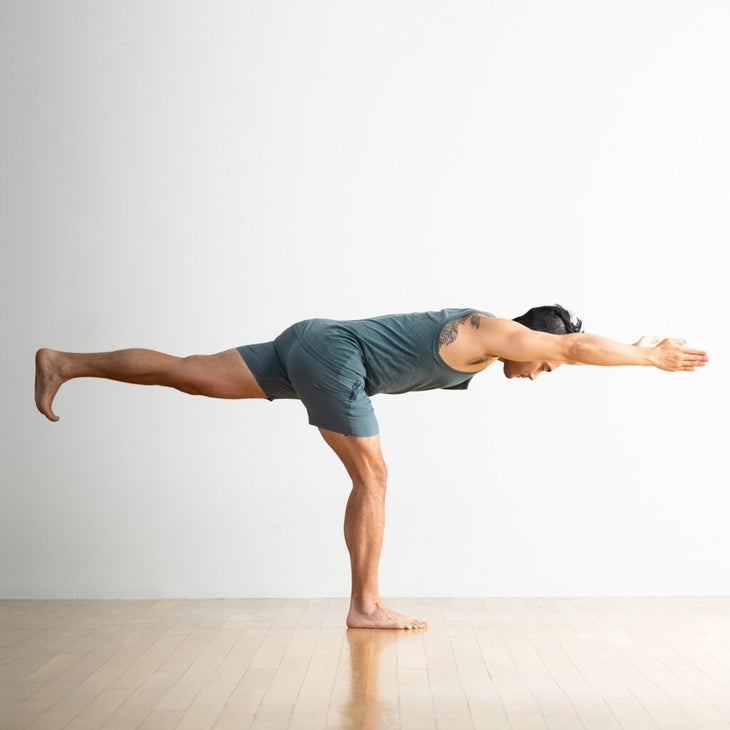
5. Flexion
Moving your thigh toward the front of your body is flexion. This stretch for the back of your hip happens in forward bends and some inversions.
Virabhadrasana III (Warrior 3)—the hip of your standing leg is in flexion
Uttanasana (Standing Forward Bend)—both hips are in flexion
Halasana (Plow Pose)—both hips are in flexion
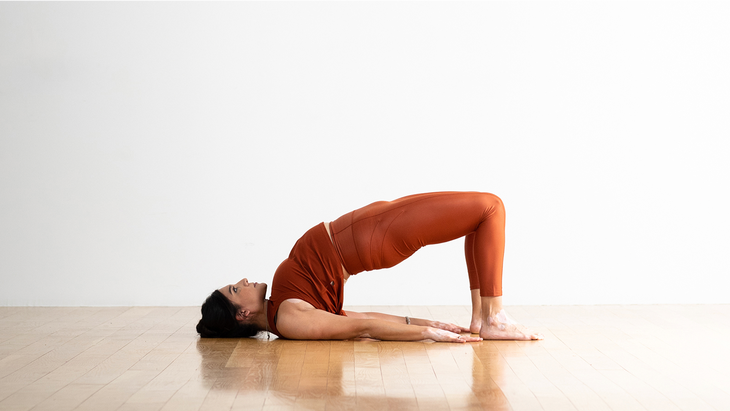
6. Extension
As opposed to flexion, extension means moving your thigh away from your front body. This happens in back bends, stretching the muscles at the front of your hips.
Setu Bandha Sarvangasana (Bridge Pose)—both hips extension
Ustrasana (Camel Pose)—both hips are in extension
Purvottanasana (Upward or Reverse Plank Pose)–both hips are in extension
See also: 11 Yoga Poses That Unlock Deep Hip Opening
About our contributor
Andrew McGonigle has studied anatomy for more than 20 years. After initially studying to become a doctor, he moved away from Western medicine to become a yoga and anatomy teacher. He shares his knowledge of the body and the ways it moves in yoga teacher training courses throughout the world and leads his own Yoga Anatomy Online Course. His second book, The Physiology of Yoga, was published in June 2022. To learn more about Andrew, check out doctor-yogi.com or follow him on Instagram @doctoryogi.